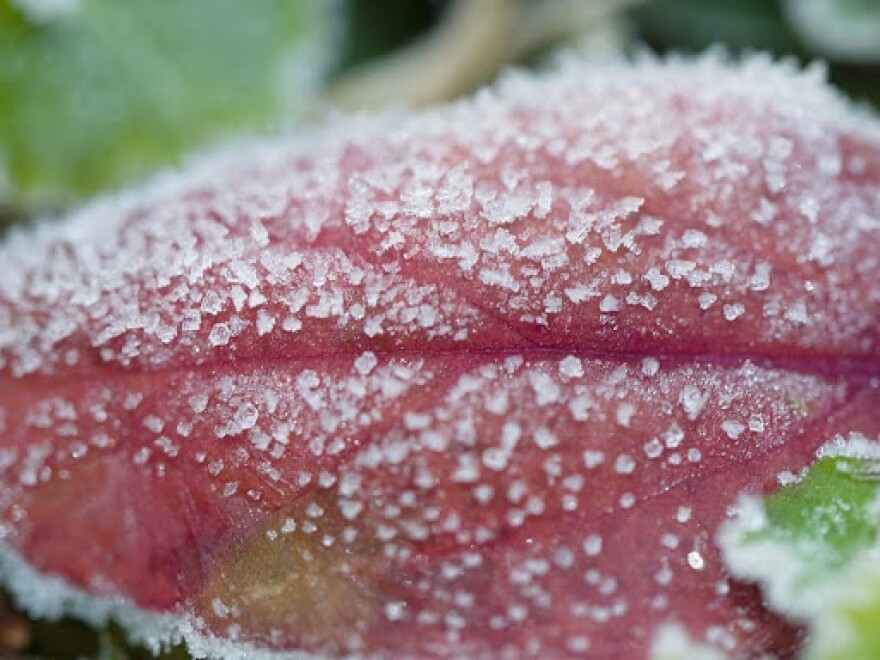Knowing your hardiness zone can help you choose the right plants for your garden. The US Department of Agriculture sets the plant hardiness zones by the average cold temperatures in winter. This is important since colder temperatures restrict plant growth. You can find the USDA hardiness map at https://planthardiness.ars.usda.gov/ -- enter your zip code to see your zone. In Virginia, we have zones 8a in the southeast coastal area to 5a/b at the mountain tops in a few western areas. What this means is someone in 8a would anticipate winters with average coldest temperatures at 10 to 15°F while 5a sees a range of -20 to -15°F. What is an example of winter cold and its impact on plant growth? In the mountains, a rosemary plant (Salvia rosmarinus) needs a location that is warm, like on the southside of the house to prevent winter loss.
Another way cold temperatures impact plants is the last frost date in spring and first frost date in fall. The time between last and first frost sets the days gardeners call the growing or gardening season since this is when annual plants sprout, grow, and set seeds. Regions of Virginia vary greatly in the number of frost-free days for gardening, from early April to early November in zone 8a, while in the Shenandoah Valley, we look at mid-May for last frost date and mid-October for first frost. How does this impact a vegetable garden? In the Shenandoah Valley, I just have enough time to get the ground warm enough for a sweet potato crop, while my friends out east with their longer growing season have a much easier time growing sweet potatoes. For more information, use Virginia Cooperative Extension’s detailed maps and notes (https://www.pubs.ext.vt.edu/426/426-331/426-331.html).

In March, spring fever hits as I watch the grass begin to green up and see the yellow burst of daffodils. There are many cold-tolerant vegetables to get started in the garden, including annuals like spinach, arugula, kale, peas, turnips, radishes, onion sets and collards. If you are starting a perennial asparagus bed, March is the time to get ready to plant crowns. I get impatient waiting for the ground to warm up so I can get to the vegetables and flowers that cannot take a ‘hard frost.’ Using a floating row cover can extend my garden season, keeping the cold air from settling on the plants and possibly setting the growth back, or killing the plants when frost forms on leaves and stems (https://www.pubs.ext.vt.edu/HORT/HORT-291/HORT-291.html). Even with cool temperatures in March, across Virginia it is time to plan the garden, order seeds and plants, and prep beds in anticipation of the growing season.

Happy Gardening!
Robyn







